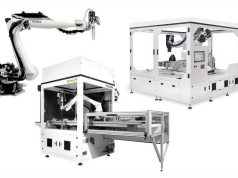Norwegian company Aker Solutions uses recycled steel from product waste to 3D print underwater components for oil and gas production. This is expected to significantly reduce resource consumption and CO2 emissions compared to conventional manufacturing.
By comparison, protective sleeves traditionally made from stainless steel are responsible for producing 237 kilograms of CO2. However, when they are manufactured using 3D printing, the CO2 footprint is reduced to just 34 kg per protective sleeve.
“The process only requires 13 kg of steel powder versus 227kg (forge and transport), so that’s a significant reduction in C02 emissions and material waste,” says Ådne Østebrøt,” senior services specialist, Aker Solutions.
The processing of the metallic waste into additive powders was carried out by the specialists at F3niche.
“Over 80 percent of the protector additives originated from our Tranby site’s own steel waste,” Østebrøt says
To cut transportation costs and reduce the use of imported materials, locally sourced steel material taken out of service was also added.
“Continued collaboration in AM and new opportunities in waste recycling offer an exciting future for the business,” says Gary Milne, VP for Engineering P&T and Technology Partnerships, Aker Solutions. The tubing hanger protector may be a small part, Milne says, but it seizes on the opportunity to save resources, get greener and deliver customer value.
3D printing not only has the advantage of saving resources and being greener, but it also offers flexibility in production. It could be the answer to many challenges in the industrial supply chain while making a significant contribution to the circular economy.
Subscribe to our Newsletter
3DPResso is a weekly newsletter that links to the most exciting global stories from the 3D printing and additive manufacturing industry.























